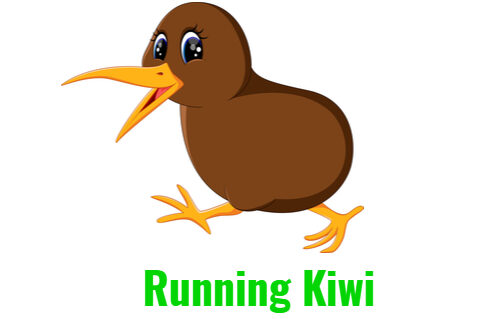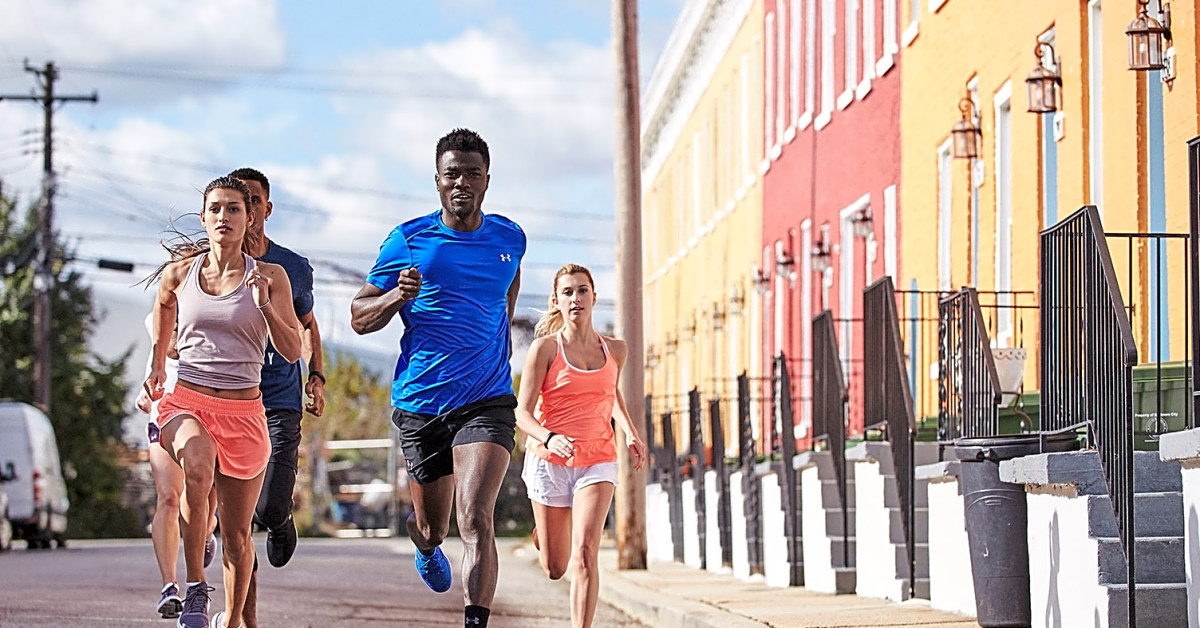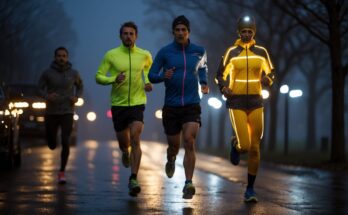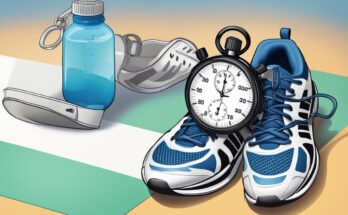Age has long been perceived as a limitation when it comes to physical activities, particularly running. However, recent studies and success stories of older runners have shown that there is little truth to the notion that age is a barrier to achieving one’s best running performance. As people grow older, their bodies may undergo certain changes, but these can be managed and, to a certain extent, even overcome with proper training, nutrition, and mental attitude.
A common misconception is that as individuals age, they lose their ability to run efficiently or reach their peak performance. The reality is that numerous factors come into play, including genetics, lifestyle choices, and overall health. With the right approach to training and understanding of one’s body, it is indeed possible for older runners to maintain or even surpass their younger counterparts in terms of speed, endurance, and overall running performance.
Dispelling this age-related myth becomes crucial to encourage those who believe they have passed their prime to lace up their running shoes and hit the pavement. A shift in perspective can greatly boost confidence and motivate individuals to push their limits, regardless of what the calendar may say. The key to unlocking one’s best running potential is to focus on individualized goals, training, and self-awareness, proving that age is just a number when it comes to achieving greatness on the track.
Age and Running Performance
Physiological Factors
As age increases, several physiological changes occur that can impact running performance. Muscle mass tends to decrease, leading to a reduction in strength and power. Furthermore, the cardiovascular system experiences reduced efficiency, including decreased maximum heart rate and stroke volume. These factors contribute to a decline in aerobic capacity (VO2 max). However, regular physical activity, proper nutrition, and maintaining muscle strength can help counteract these age-related declines.
Endurance and Stamina
Endurance and stamina are crucial components of running performance, particularly for long-distance events. While age may lead to a reduction in overall performance, it does not necessarily equate to a decline in endurance and stamina. In fact, older runners often possess increased mental resilience, which can enhance their ability to persevere during challenging runs. Additionally, endurance and stamina can be improved through consistent training, regardless of age. Consequently, many senior runners continue participating in marathons and other long-distance races, illustrating that age is not a barrier to running success.
Benefits of Running at Different Ages
Middle-Aged Runners
Middle-aged runners can experience extraordinary benefits by participating in various running events such as marathons, half marathons, or joining a running club. Running is an excellent way to maintain and improve overall fitness as it strengthens the cardiovascular system, reduces the risk of type 2 diabetes, and helps manage blood pressure and cholesterol levels.
Moreover, running aids in social connections when joining running clubs, which can boost motivation and create a sense of camaraderie. Participation in events like the London Marathon can also lead to a sense of accomplishment, fostering self-confidence and determination.
Senior Runners
Senior runners can also greatly benefit from incorporating running into their routine, whether it be through marathon events or simply walking. Studies have shown that engaging in regular exercise can combat age-related health issues such as high blood pressure, high cholesterol, and even some types of cancer.
Regular cardiovascular activities like running have been proven to:
- Improve overall heart health
- Help manage diabetes and blood pressure
- Maintain bone and joint health
- Enhance cognitive function
For senior runners, gradually building up endurance through walking, jogging, or participating in running events ensures that the activity remains enjoyable and accessible.
In conclusion, age should never deter individuals from pursuing running. It offers numerous health benefits at any stage in life, promotes better quality of life, and fosters lasting friendships through clubs and participation in events.
Overcoming Mental Barriers
Self-Belief
Developing a strong sense of self-belief is essential for runners of all ages. As we age, it’s natural to experience a decrease in confidence about our physical abilities. However, it’s important to remember that the mind plays a crucial role in overcoming these mental barriers. Research has shown that endorphins, which are released during exercise, can help alleviate symptoms of anxiety and depression, improving an individual’s overall mood. By focusing on the benefits of exercise, runners can begin to develop a more positive mindset.
One effective way to build self-belief is by engaging in continuous learning. Reading books, listening to podcasts, and attending university courses can all contribute to a more informed and confident outlook. Writing down thoughts and reflecting on progress can also help strengthen self-belief and promote personal growth.
Goal Setting
Establishing clear and realistic goals is another vital component to overcoming mental barriers in running. Goal setting provides focus and purpose, regardless of a runner’s age. As the brain ages, it benefits from structured information and achievable targets. By breaking down a larger goal into smaller, more manageable tasks, runners can experience a sense of accomplishment and maintain motivation.
To create a goal-setting plan, runners can utilize the following steps:
- Identify specific goals: Clearly define what you want to achieve (e.g., running a specific distance, participating in a race, etc.)
- Determine timeframe: Establish a realistic deadline to complete the goal, and adjust as necessary.
- Break down tasks: Identify the smaller tasks required to reach the goal, and organize them into a logical order.
- Track progress: Regularly monitor progress, and adjust plans as needed to stay on track.
Through a combination of self-belief and goal setting, runners of all ages can overcome mental barriers and maintain a positive mindset. By acknowledging the power of the mind and setting achievable targets, age can indeed be no barrier to reaching one’s best potential in running.
Injury Prevention and Management
Strength Training
Strength training is a crucial aspect of injury prevention and management for runners of all ages. Incorporating exercises such as lifting weights, bodyweight exercises, and resistance band workouts can help build muscle, strengthen joints, and improve overall physical fitness. This, in turn, can prevent common running-related injuries and enhance performance.
For older runners, strength training is particularly important since muscle mass and bone density naturally decrease with age, increasing the risk of injury. However, it is essential to consult a doctor or professional trainer to create an individualized workout plan.
Recovery and Rest
Adequate recovery and rest are essential components of effective injury prevention and management in runners. Adopting a healthy balance between training and rest allows the body to heal and adapt to the physical demands placed on it during workouts and races alike.
To optimize recovery, runners can follow these tips:
- Ensure sufficient sleep, aiming for 7-9 hours per night.
- Implement active recovery days, which may include light physical activities like walking, yoga, or swimming.
- Consider using recovery tools, such as foam rollers or massage balls, to release muscle tension or tightness.
Rest is not only crucial for physical rejuvenation but also for maintaining mental stamina and motivation throughout training cycles. By implementing proper recovery strategies, runners of all ages can continue participating in physical activities and maintain their overall health.
Inspirational Stories and Resources
Running Books
In “The Race Against Time,” author Richard Askwith delves into the world of masters running and shares inspiring stories of athletes who discovered their passion for running later in life. The book showcases the resilience and determination of these runners, proving that age is just a number.
Another popular book among runners is “Runner’s World,” which acts as a comprehensive guide for all things running. It caters to a wide range of audiences, from beginners to seasoned athletes, and can serve as a valuable resource for older individuals looking to embrace the sport.
Podcasts
For auditory learners and runners who like to listen while they run, podcasts can be a great source of inspiration and knowledge. One example is “Masters Running,” a podcast that focuses on the unique challenges and successes faced by older athletes. Interviews with experienced runners provide tips on maintaining peak performance regardless of age.
Websites
The “Runner’s World” website is a hub of information, including training plans, race schedules, and advice on overcoming physical and mental obstacles. Additionally, they often feature inspirational stories from athletes who have used running as a tool to manage grief, like a husband who took up marathon training to channel his emotions after losing his wife. These stories resonate with runners, showing that age and life circumstances don’t have to limit what can be achieved through running.
Additional Health-Boosting Activities
Alternative Exercises
While running is a fantastic way to stay healthy and active at any age, it’s essential to incorporate other forms of exercise as well. Walking is an excellent low-impact alternative, particularly for those who may have joint issues or other limitations. Whether it’s a leisurely stroll around the neighborhood or a more invigorating hike, walking provides numerous benefits, like reducing stress and improving cardiovascular health.
Gardening is another fantastic way to stay active. It has both physical and mental health benefits, such as helping to lower blood pressure and promoting relaxation. Plus, it allows individuals to connect with nature and enjoy the outdoors.
For those looking to try something new, traveling is a great way to explore different activities and experiences. It’s an opportunity for individuals of all ages to take lessons in activities like dancing, martial arts, or even language classes. Traveling can broaden one’s horizons and contribute to overall wellness.
Wellness Strategies
In addition to physical activity, it’s essential for people of all ages to focus on overall wellness. A key aspect of wellness is managing stress. One way to address this is by teaching children mindfulness techniques or meditation practices early on. These skills can greatly help them navigate the complexities of society and the demands of daily life.
Here are a few simple practices for reducing stress and maintaining wellness:
- Meditation: Take a few minutes each day to sit in silence and focus on deep breathing.
- Journaling: Make a habit of writing down thoughts, feelings, and daily experiences to improve self-awareness and emotional wellbeing.
- Healthy Eating: Ensure a balanced diet that nourishes the body and supports overall health.
- Sleep: Prioritize 7-9 hours of quality sleep each night to help the body recover and restore energy for the following day.
Making a conscious effort to incorporate these wellness strategies into one’s daily routine can contribute to a more balanced, healthy, and fulfilling life, regardless of age.




